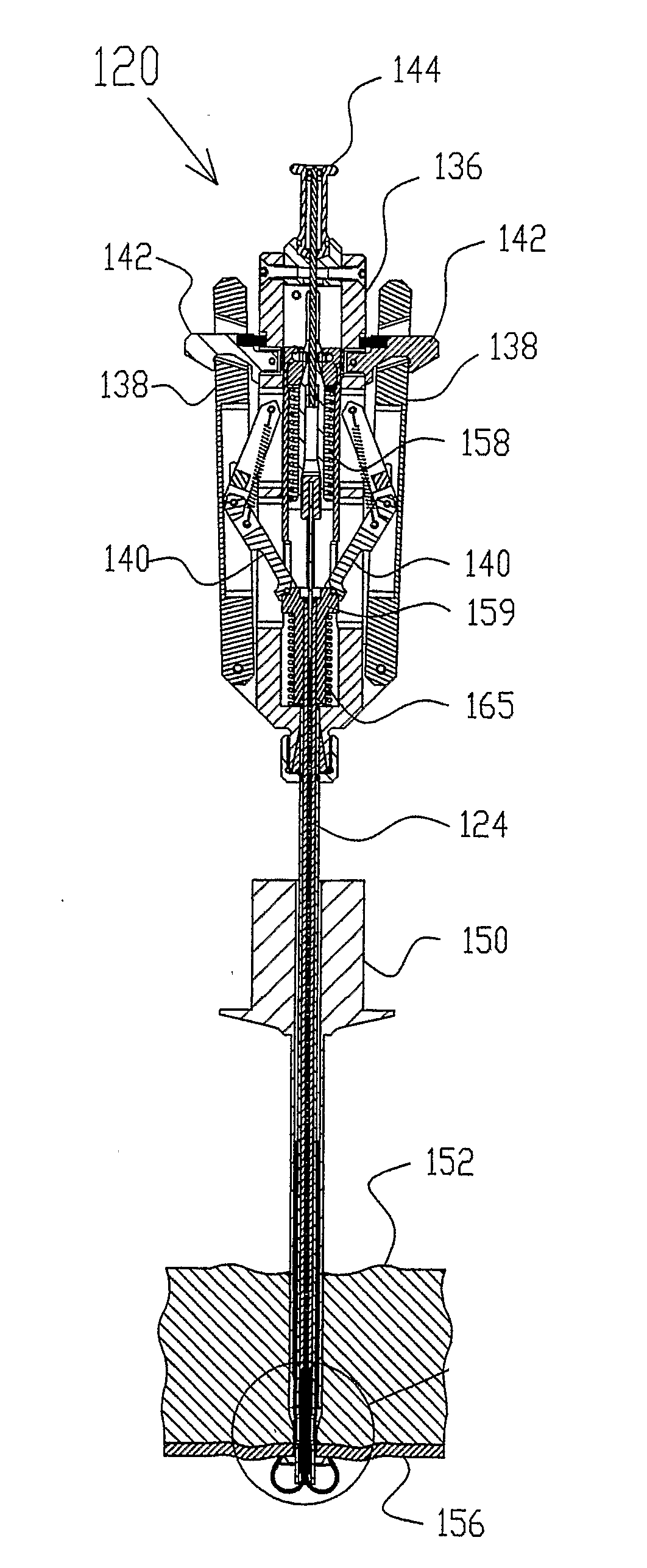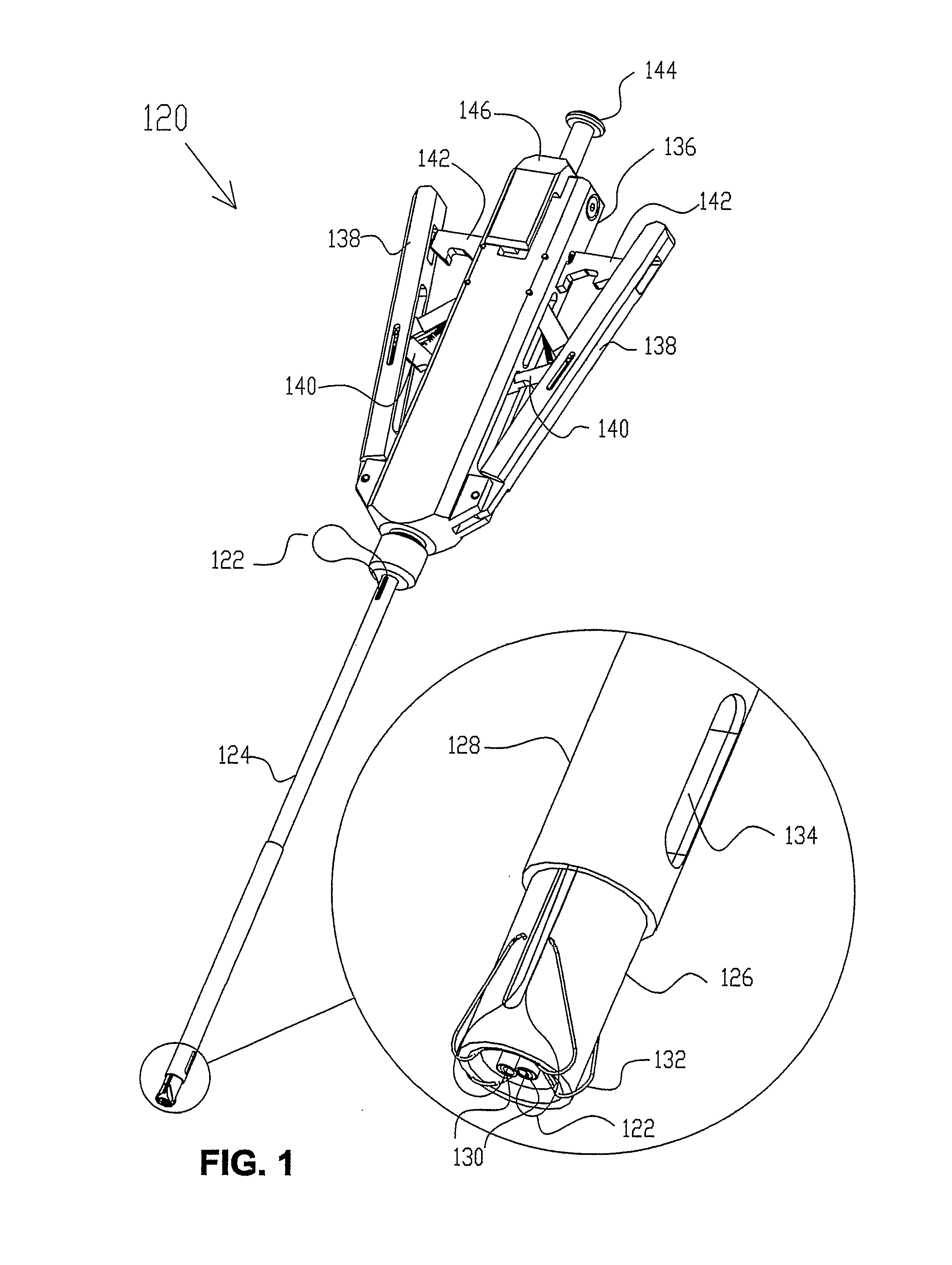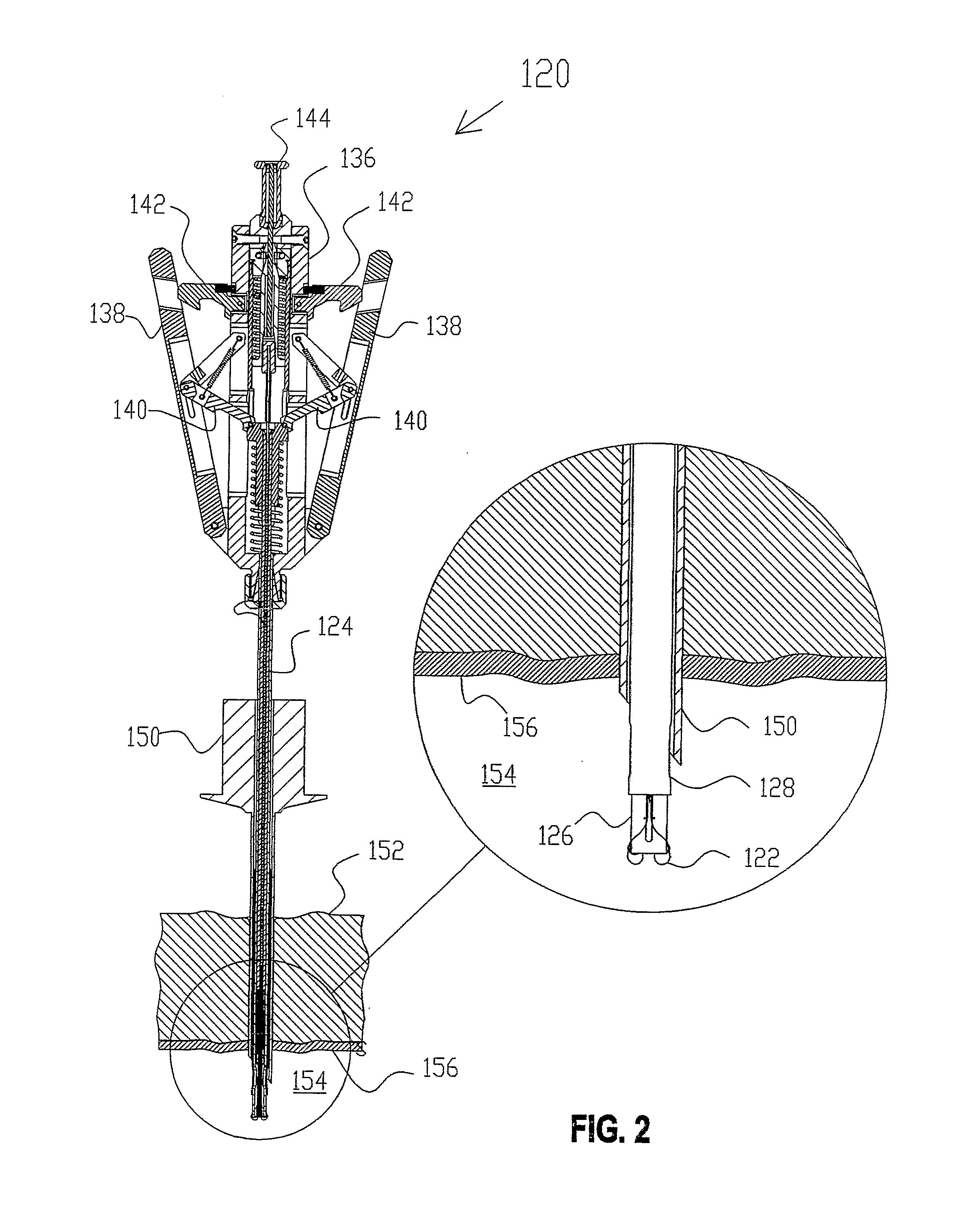Suture Device
a suture device and minimally invasive technology, applied in the field of medical devices, can solve the problems of increasing the risk of subsequent bleeding, difficulty in accessing and suturing internal tissues (such as the intima of the blood vessel or the abdominal fascia) through puncture, etc., and achieve the effect of improving safety and convenien
- Summary
- Abstract
- Description
- Claims
- Application Information
AI Technical Summary
Benefits of technology
Problems solved by technology
Method used
Image
Examples
Embodiment Construction
[0114]FIG. 1 is a schematic, pictorial illustration showing a device 120 for insertion of a suture 122 in body tissue, in accordance with an embodiment of the present invention. Device 120 is adapted particularly for closure of laparoscopic port puncture sites in the peritoneum, following laparoscopic surgery. Devices of this sort may also be adapted, however, for closure of punctures in blood vessels following vascular catheterization, as well as other surgical operations. Some of these alternative applications and embodiments are described further hereinbelow.
[0115]Device 120 comprises a shaft 124, whose distal end is shown enlarged in the inset in FIG. 1. The device is shown in FIG. 1 in its initial, closed configuration. In this configuration, shaft 124 is inserted through the puncture, as described hereinbelow. The shaft comprises a distal tube 126, which holds needle guides 130. The needle guides comprise a resilient material, typically a superelastic material, such as Nitinol...
PUM
 Login to View More
Login to View More Abstract
Description
Claims
Application Information
 Login to View More
Login to View More - R&D
- Intellectual Property
- Life Sciences
- Materials
- Tech Scout
- Unparalleled Data Quality
- Higher Quality Content
- 60% Fewer Hallucinations
Browse by: Latest US Patents, China's latest patents, Technical Efficacy Thesaurus, Application Domain, Technology Topic, Popular Technical Reports.
© 2025 PatSnap. All rights reserved.Legal|Privacy policy|Modern Slavery Act Transparency Statement|Sitemap|About US| Contact US: help@patsnap.com



